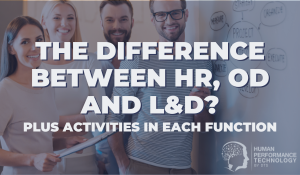Microlearning vs. Long-Form: Choosing the Right Approach
-3 Minute Read
How balancing microlearning and long-form training enhances learning and development effectiveness.
Introduction
When it comes to learning and development (L&D), one size doesn’t fit all. Different training methods address different needs, and finding the right balance between microlearning and long-form programs is essential for building a skilled, engaged workforce. By understanding the strengths of each approach and tailoring them to specific learning objectives, organisations can optimise knowledge retention, engagement, and performance.
This post explores the benefits of microlearning and long-form training, how to determine the best approach for different scenarios, and strategies for designing engaging learning experiences.
The Benefits of Microlearning and Long-Form Training
Microlearning: Fast, Accessible Learning
- Quick Knowledge Boosts: Short, focused lessons (e.g., 5–10 minutes) are ideal for delivering bite-sized information that learners can apply immediately.
- Flexibility and Accessibility: Microlearning can be accessed on-demand via mobile devices, making it perfect for busy schedules or remote teams.
- Enhanced Retention: Repetition and concise content help reinforce key concepts over time.
Long-Form Training: Deep Skill Mastery
- Comprehensive Learning: Long-form programs delve into complex topics, providing a thorough understanding and application of skills.
- Structured Progression: These programs often include hands-on activities, group discussions, and evaluations that deepen learning.
- Transformative Development: Long-form training is suited for leadership development, technical expertise, or cultural alignment initiatives.
Determining When to Use Each Approach
Microlearning for Immediate Needs- Use microlearning to address specific skills, compliance requirements, or just-in-time training needs. For example, a short module on a new software feature for an upcoming project.
- Choose long-form programs for in-depth skill-building, behaviour change, or strategic alignment. For example, a comprehensive course on leadership development for emerging managers.
- Combine microlearning and long-form methods to maximise engagement and retention. For example use microlearning to supplement a long-form program, such as pre-work videos or follow-up refreshers.
Strategies for Designing Engaging Learning Formats
Align Learning Formats with Objectives
Identify the specific goals of each training initiative, such as knowledge reinforcement, behaviour change, or strategic alignment. Tailor the approach to match learning outcomes, ensuring that the format supports the desired impact.
Leverage Technology for Hybrid Learning
Use learning management systems (LMS) to blend microlearning modules with long-form courses.
Look for ways to enhance engagement across formats by incorporating concepts and tools like gamification, virtual reality (VR), or interactive quizzes.
Maximise Engagement Through Personalisation
Align content delivery with individual strengths, motivators, and behavioural preferences to increase learner interest and retention. Provide options for learners to choose between microlearning and in-depth sessions based on their schedules and roles.
Measure and Refine Learning Approaches
Use data analytics to track engagement, completion rates, and knowledge retention. Collect feedback from participants to identify strengths and areas for improvement in both micro and long-form training.
Actions to Consider
To determine the best learning approach for your organisation, consider these steps:
- Evaluate Current Learning Needs:
- Are your training goals focused on quick knowledge delivery or deep skill mastery?
- How accessible and flexible does the training need to be for your team?
- Combine Formats for Maximum Impact:
- What topics could benefit from a hybrid approach, blending microlearning and long-form training?
- How can you integrate pre-work or follow-ups to reinforce long-form learning?
- Leverage Technology for Personalisation:
- Are you using tools that align training programs with individual motivators and preferences?
- How can technology support hybrid learning formats to suit diverse team needs?
- Track and Improve Learning Outcomes:
- What metrics are you using to measure engagement and retention across different formats?
- How can learner feedback shape future training initiatives?
Consider this: How can your organisation balance microlearning and long-form training to meet diverse learning needs while driving engagement and retention?
Final Thoughts
Choosing the right learning format is key to driving engagement, retention, and performance. While microlearning offers flexibility and accessibility for quick needs, long-form programs provide the depth and structure required for transformative growth. By combining the strengths of both approaches and aligning them with organisational goals, L&D leaders can deliver impactful and engaging training experiences.
For employees, this balance ensures relevant, engaging learning that supports skill development and growth. For organisations, it creates dynamic, adaptable training programs that foster long-term success and alignment.
Which learning format best suits your organisation’s needs, and how can you use a hybrid approach to enhance your L&D programs?
Some of our other posts that explore the Learning & Development stage include:
- Reskilling at Scale: Preparing for Organisational Transformation
- Learning in the Flow of Work: Making Growth Seamless
- The ROI of Continuous Learning
- AI in L&D: Revolutionising the Learning Experience
- Learning Beyond the Classroom: Peer-to-Peer Training
Topics:
Learning & Development
Trevor O'Sullivan
General Manager. Since the early 2000s, Trevor has worked with thousands of Talent Management professionals to develop and apply assessment-based talent management solutions for selecting, developing and managing people. Trevor is an active member of the TTI Success Insights (TTISI) Global Advisory Council, contributes to TTISI product development and is a regular presenter at TTISI-R3. He is honoured to have received multiple Blue Diamond Awards and, more recently, the Bill Brooks Impact Award recognising his contributions to the TTISI global network.

/AI%20in%20L%26D_%20Revolutionising%20the%20Learning%20Experience.png?width=374&name=AI%20in%20L%26D_%20Revolutionising%20the%20Learning%20Experience.png)

We Would Like to Hear From You (0 Comments)